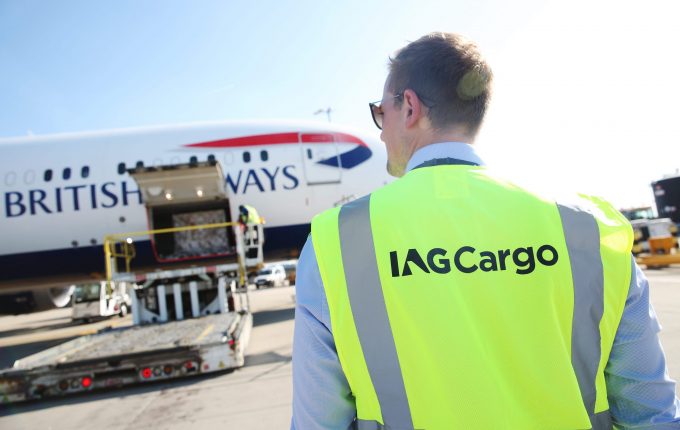No summer siesta for airfreight
Traditionally, air cargo spot rates tend to decline or remain flat at best during H1, ...

The return of bellies to the market has led to an increase in cargo capacity, and lower rates than during the pandemic peak, but it’s not yet at pre-Covid levels, claimed IAG Cargo this week.
Increasing passenger flights and available cargo capacity is significant for IAG Cargo, according to Camilo Garcia Cervera, its chief sales and marketing officer.
“With further capacity, we can offer more flexibility in scheduling shipments, which is particularly beneficial for time-sensitive cargo,” he told The Loadstar.
The strong comeback by belly space has created some shifts in the wider cargo supply chain, in terms of rates, capacity and demand. On key tradelanes, such as the transatlantic, Mr Garcia Cervera said IAG Cargo had continued to increase services, and now operates around 844 flights a week between Europe and the US.
While IAG claimed airfreight rates were not at pre-pandemic levels, generally – they are on the transatlantic. According to TAC Index data, Heathrow-to-the-US has been at pre-pandemic levels since August, bumping along at about $1.10 per kg. US-to-Europe, meanwhile, never reached significant long-term pandemic highs and has also returned to normal levels, just below LHR-US rates.
Since Covid, however, costs have risen, and with other transatlantic-focused belly carriers struggling with troughs in revenues and yields, IAG is likely to reveal a similar situation when it announces results next month.
However, its focus on more services and new destinations may attract customers. IAG recently opened a new ‘constant climate’ station at Cincinnati Airport, has resumed operations in China after a two-year pause, launched a new service between Madrid and Doha and is still increasing capacity between Europe and Latin America.
“Moreover,” said Mr Garcia Cervera, “since the pandemic, there has been an increased focus on the transport of pharmaceuticals, and we experienced a 45% increase in the volumes transported in the first half of 2023, compared with the previous year.”
Also, the growth of e-commerce has been notable, especially in the fourth quarter of 2023, he said.
“We saw adjustments in demand throughout the holiday season, when air cargo is essential to move goods from one side of the world to the other as quickly as possible.”
Increased global geopolitical instability is forcing operators to adjust their strategies: IAG’s British Airways and Iberia flights to Tel Aviv in Israel, for example, are suspended until the end of March. And Mr Garcia Cervera added: “We are investing in our facilities, operations and leadership to ensure that we are well-positioned to navigate any uncertainties.”
Iberia plans to resume operations from Madrid to Tokyo Narita in October, offering belly capacity three times a week on an A350, he said, adding: “We are anticipating strong demand from both the hi-tech and pharmaceutical industries, as well as customers looking to export fresh produce into Tokyo.”
With Narita as another port of entry to Tokyo, IAG believes this will provide more options and flexibility. He said: “This connection allows us to support businesses in the region looking to reach Latin American markets, where we serve over 30 destinations.”
Digital transformation will be fundamental to the future of the airfreight industry, and cargo operators will need to evolve with technological advancements amid changing market dynamics.
Airlines relying solely on belly space will need to carefully optimise that capacity and will likely engage innovative technologies to achieve that. Mr Garcia Cervera says IAG Cargo is employing various digital technologies and tools to streamline operations, including at the new cargo handling facility, New Premia, at Heathrow, where a bespoke IT system optimises freight movements.
He added: “Our automated material handling system allows us to manage the flow of productivity through New Premia, enabling double the amount of cargo managed daily. The building also has air-curtain technology that creates a thermal barrier, ensuring cargo is kept at the appropriate temperatures.”
Reportedly, IAG Cargo is now working on seamless integration of digital projects, with a focus on enhancing track and trace capabilities and gathering insightful data related to booking dimensions. It claims this will allow better allocation and utilisation of cargo capacity.
Comment on this article